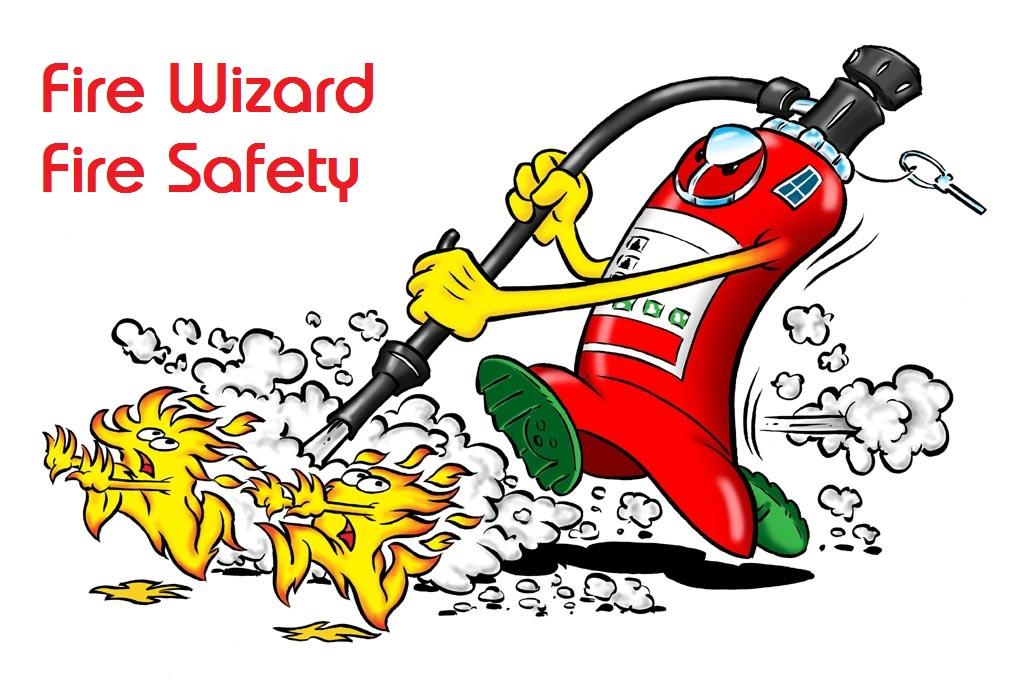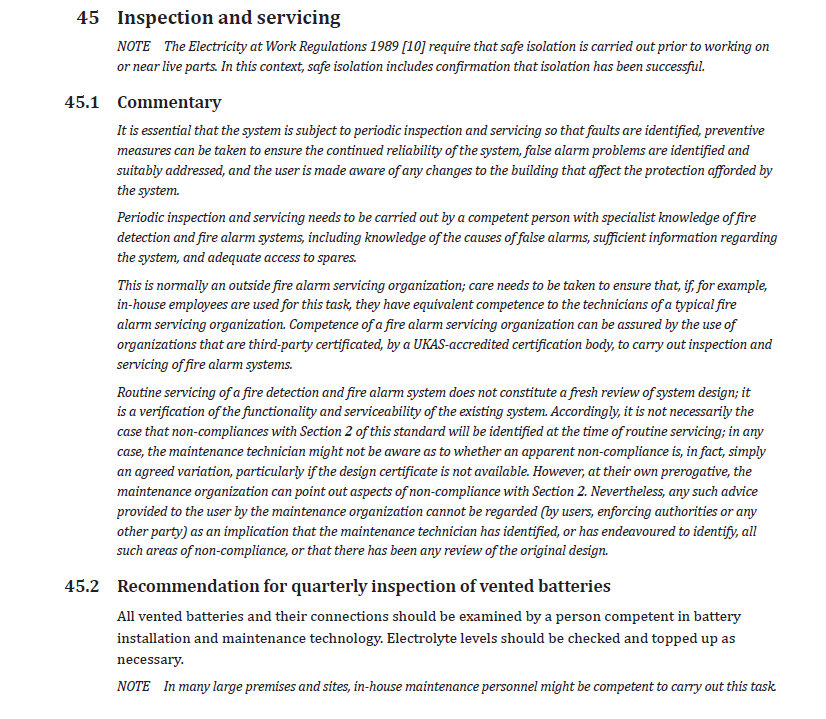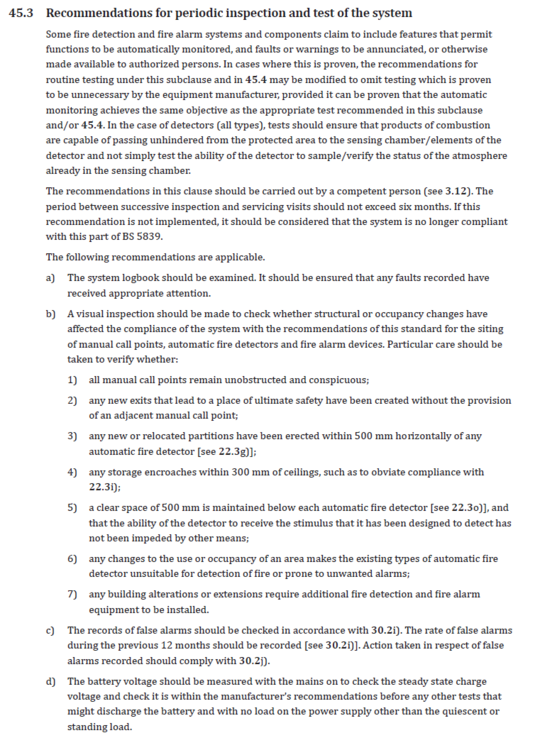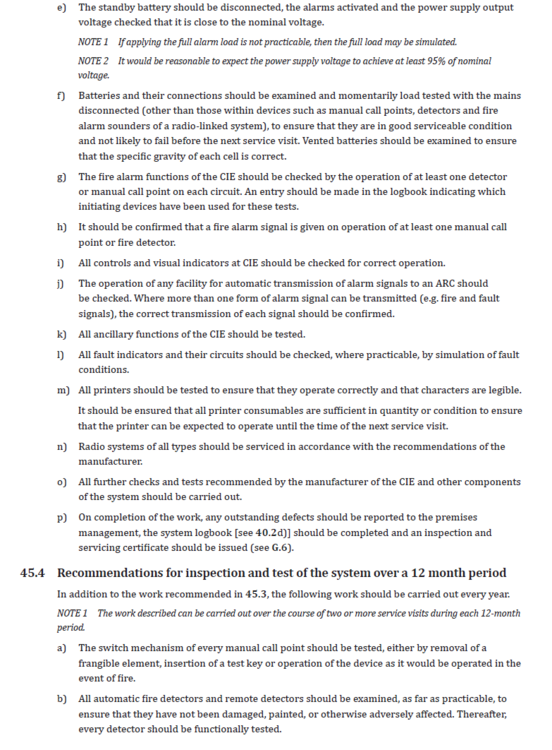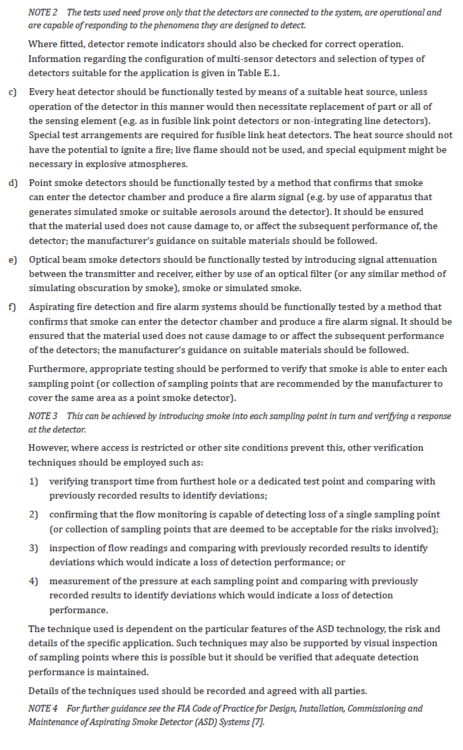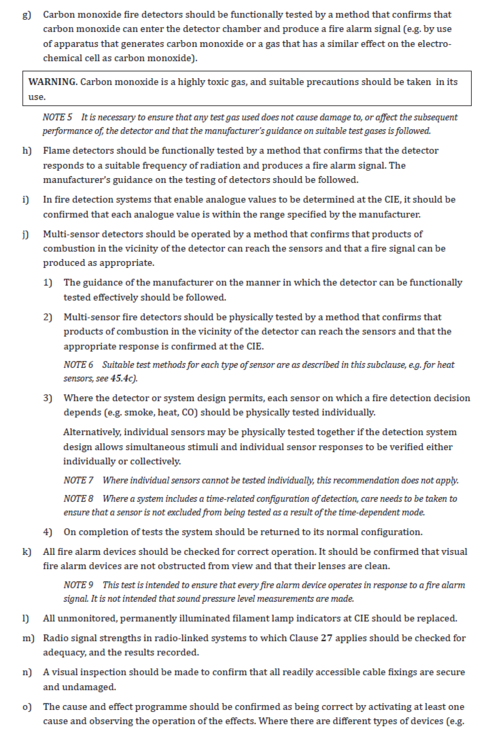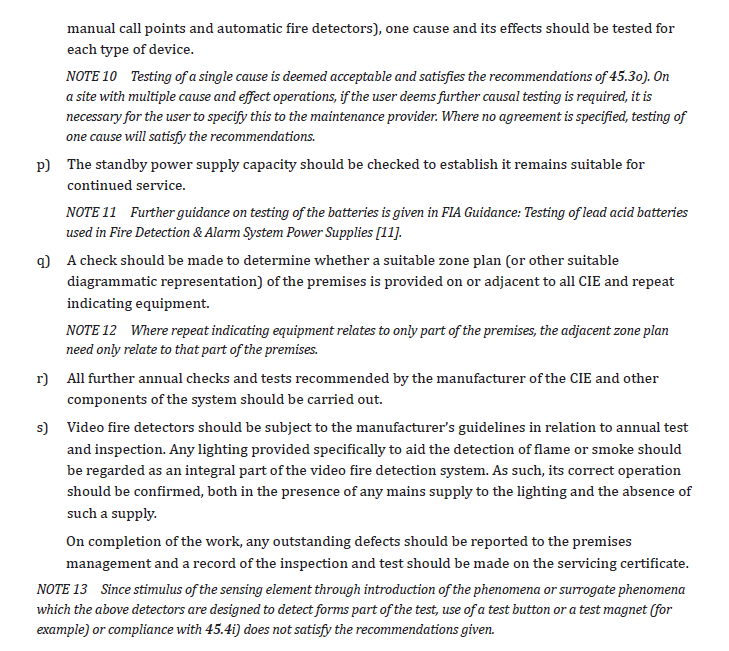-
Posts
2,703 -
Joined
-
Last visited
Everything posted by AnthonyB
-
Are you taking about a storey exit onto an external escape stair or an internal fire door onto an internal protected stair? It could be seen to narrow and obstruct the escape and depending on how it fastens that could be an issue, but it's not necessarily an outright no. Your Fire Risk Assessor, who will be familiar with your premises and layout should be able to give a definitive site specific answer.
-
You don't understand PHE, the intent is not to immediately evacuate the premises at all, just the compartment of origin, the aim being to avoid needing to externally evacuate the premises due to the vulnerabilities of the residents and the resources required to do this. PHE aims in having a minimum of 60 minutes seperation between the occupiers and the fire - the 30 minutes construction & door of the room and the 30 minutes construction & doors of the sub compartment. Smoke is the biggest killer (as shown by the 14 dead in the Rosepark Care Home fire) and so all fire doors should be of the 's' designation with cold smoke brushes/fins in addition to intumescent seals. I'd question the FRA and the people who retrofitted the seals as the FRA should have identified the need for compartment and sub compartment doors to have smoke seals as well as the bedrooms and the smoke seals should have been fitted correctly so the doors don't snag.
-
Assuming they have always normally been off it would suggest something affecting the supply to the fitting between the consumer unit and the fitting (wiring, junction boxes) or a fault in the unit. When it's lit does the little red or green LED light on it go out?
-
This should have been picked up in the survey when you bought it and either compliance required before signing the contract or the seller required to provide building regulations indemnity insurance for you in case you get enforcement action taken. Unless the conversion was in the last year or so it's too late for the local authority to require you to regularise the work if you leave it as is - but if you carry out any new work affecting the area in question the clock resets and you would be expected to have a compliant situation at the end. The fact that it is going from a bedroom to a bathroom may count in your favour though. You need to speak to a Building Regs expert to be sure though.
-
You are defeating the point of having P50's if still supplying CO2 as well - you are still needing extra training on which type to use and still need an external service company. It's not new technology. The use of di-electric tested extinguishers on electrical fires dates back to at least 1977 in British Standards for extinguisher manufacture (when BS5423 was first published and the AFFF Spray extinguisher was invented by Thomas Glover) and it isn't a new concept. If your existing foam extinguishers have passed the test (i.e. not printed 'do not use on electrical fires) they are just as safe on electrical fires as the P50 as they have both gone through the exact same test, it's just an industry influenced move not to put this on most extinguishers. In Europe the electrical safety of spray water & foam extinguishers has been a part of standards for almost as long. British Rail used foam spray extinguishers that had passed the 35kV test across their entire estate and rolling stock in the late 80's to replace both water extinguishers for Class A fires and Halon extinguishers for electrical fires with only CO2 being retained in extremely small numbers for kitchens and the main HV electrical room of a building.
-
Size of an extinguisher has not been a factor in specifying extinguishers for nearly 50 years. The fire rating of the extinguisher (the biggest fire a trained operator can put out with the extinguisher) The minimum recommended rating is 26A, made up using a minimum of two extinguishers (e.g. 2 x 13A rated units), however in a small premises a single 13A unit may in reality suffice. Your old 9 litre water will have a 13A (or 21A) rating - but so does a 2litre Triclass P50 with the added benefit of a 55B rating for flammable liquid fires and safe to use on fires where an electrical supply of up to 1000V is present. On a few office sites now I've been able to replace a fire point of a 6 litre water and 2kg CO2 with a single 2 litre P50 as the ratings are the same.
-
No, as this would indicate that both the mains is off and the batteries drained (unless by some small chance the indicator lights are faulty). If the agent/landlord isn't responding to calls for maintenance you should inform the fire safety office of your local Fire Service who can compel them to act.
-
Emergency ladders are not normally accepted as a means of escape, however as an escape window alone would be acceptable, it could be considered better than the minimum, assuming the internal escape route and alarm systems are up to scratch.
-
Nothing stops a final exit door from being used for normal access as long as it is always available in an emergency.
-
You need a property lawyer to advise. As long as the Party Wall Act is complied with it seems you have the upper hand and can put up the fence if they have no right of access
-
That's rather stretching "adjacent"! A useful benchmark would be to take the distances from the requirement for the green manual release call points for exit doors which are also meant to be in close proximity of the relevant door - in BS7273-4 it says ".....They should be sited within approximately 2 m of the associated door(s)....."
-
If they need to be FD30 doors they should have the strips. The old 'inch door stop' suggested as an alternative is an obsolete method that predates the invention & wide adoption of intumescent seals (>40 years ago) and should not be advised in new builds. If it's a single family dwelling it doesn't even need to be an FD30 door. An FD20 door will suffice - as these aren't widely available however FD30S door sets are widely used. It used to be common to accept an FD30 door without intumescent strips as it was assumed that the required 20 minutes integrity would still be gained but in recent years this has been found to be unreliable and is now deprecated and to do this would invalidate the doorset's certification (http://www.premdor.co.uk/pdf/fire-door-explanation.pdf). So in essence: - Intumescent strips: Yes - Inch stop: No!
-
-
The assumption is they are adjacent, so no need for a distance, what's the exact scenario?
-
What did you do as part of the test? Ultimately you are legally responsible and have to demonstrate adequacy of your system of maintenance whether carried out yourself or by others - are you happy you could defend your position in interview and at Court? If so you should be fine if you feel competence can be demonstrated and the correct service completed.
-
If you are in England or Wales and you are in a block of flats with communal space it has been a legal requirement since 2006 to have a Fire Risk Assessment for the common parts. The Responsible Person under the legislation (which is the Regulatory Reform (Fire Safety) Order 2005) would be the freeholder, or if right to manage has been invoked and the freehold purchased by the tenants, the Tenant Management Company. Usually a competent third party competent person would carry out the assessment, who should ideally be listed here: https://www.firesectorfederation.co.uk/fire-risk-assessment/fire-risk-assesment-directory/
-
i Only just seen this recent thread - I agree, urgently contact the fire service, but also the Council housing department (who presumably placed you there) as they need to know they are sending people to an inappropriate venue.
-

Emergency override switches (Green Box) - testing
AnthonyB replied to Meady's topic in Fire Risk Assessments
An amendment was made this year to BS7273-4 that introduces a testing regime for these - basically they should be tested in the same way as fire alarm manual call points, testing one a week and using a different one each week with no limit on how long it takes to get round them all - if you have 4 you do them all over 4 weeks if you have 44 it's OK to take 44 weeks to get around them all. How to test depends on make & model of break glass unit - some you use the test key to activate the point and reset it, others (with a resettable element) you activate the same way as for real (thumb pressure to the centre of the element) and use the test key to reset (it's important to find out which as with some that you test by activating normally you can damage them if you use the test key as it's just a reset key really) -
I remember the public comments on BS5306-3 (& ? and I added a specific section on user serviced equipment for them to consider as well as in part 8 an attempt to regularise the interpretation of the di-electric test in line with Ireland and the rest of mainland Europe but to no avail of course. There are lots of useful innovations in first aid fire fighting equipment, Safelincs supplying two out of the three main ones (Water Mist & the P50 range), that few traditional extinguisher companies will deal with for no practical fire safety reason or any good reason other than it reduces extinguisher numbers and/or servicing. I use all three current innovations in different client's premises based on risk and benefits alone.
-
Assuming it's a fire door the last thing it needs is any more taking off! Potentially in some situations it needs more adding on or other compensatory measues.
-
In that case the Fire Service ought to attend to check as no access is available and no staff.
-
Those against them are doing so for purely financial reasons as they loose the annual service fees and 5 yearly replacement income. I shall let London Fire Brigade give an impartial (& enforcers) view: "A recent innovation is the 20 year life cycle extinguisher that needs to be refilled/ refurbished after 10 years by the manufacturer. These extinguishers enable a business or organisation to carry out their own maintenance with a simple visual inspection that is required at least annually. Depending on the type and location of the extinguisher, it may be appropriate to perform a visual inspection at shorter intervals (e.g. monthly). These extinguishers are either dry powder or foam within a Kevlar lined container and covered with a composite outer casing. Due to the 10 year operational corrosion guarantee they do not require a traditional service contract. These extinguisher types meet the requirements of the Order and are therefore acceptable to the Commissioner. The extinguishers meet the di-electric test as detailed in British Standard 3 – 7 (BS EN 3- 7) and have received various third party approvals. They are suitable for a number of locations within a premises and come in various sizes. The FRA will provide detailed information with regard to their location and placement"
-
Assuming no communal provision and looking at them just as dwellings then, if not in Scotland, an owner occupier does not have to have any unless required by Building Regulations (which as lofts are converted, buildings are rewired and the proportion of post 1990 builds in use increases means more and more owner occupied homes will have them fitted). In Scotland it matters not if your house hasn't changed in 60 years, their law is retrospective. Rentals of course have mandatory provision.

